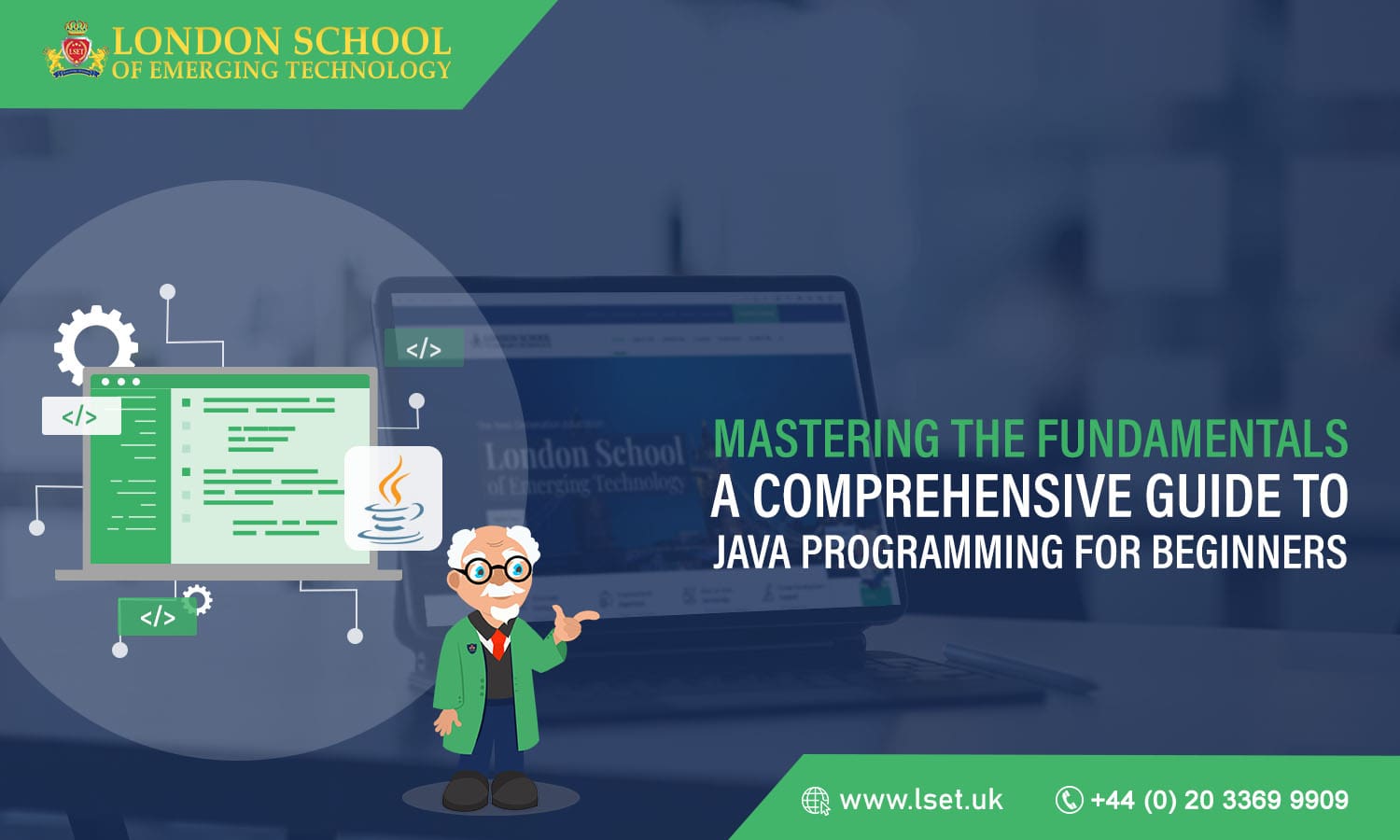Introduction to Java programming
Java programming has become one of the most popular programming languages in the world. It offers various applications, from building enterprise-level software to developing mobile apps and games. If you’re a beginner in the world of programming, learning Java can open up a world of opportunities. In this comprehensive guide, we will take you through the fundamentals of Java programming, providing you with a solid foundation to master this versatile language.
Why learn Java?
Before diving into the intricacies of Java programming, it’s essential to understand why learning Java is a valuable investment of your time and effort. Java’s recognition for platform independence means that Java programs can operate on any operating system. This characteristic makes it an exceptionally versatile language, empowering developers to write code executable across various devices. Furthermore, Java benefits from a large community of developers actively contributing to its libraries and frameworks, simplifying the process for programmers to utilise existing code and construct robust applications.
Java programming basics
To begin your journey into Java programming, it’s crucial to grasp the basics. Java follows an object-oriented programming paradigm, signifying that it treats everything as an object. Objects have properties (variables) and behaviours (methods). In Java, you define classes to create things. A class is a blueprint for an object and contains variables, processes, and constructors. Variables serve as containers for data, while methods execute actions on that data. On the other hand, constructors are specialized methods used to initialize objects.
Variables and data types in Java
In Java, variables are used to store data. Before using a variable, you need to declare its type. Java has several built-in data types, including integers, floating-point numbers, characters, and boolean values. Each data type has a specific range of values that it can hold. For example, an int can store whole numbers between -2,147,483,648 and 2,147,483,647. Selecting the suitable data type based on your program’s requirements ensures efficient memory utilisation.
Operators and expressions in Java
Operators are symbols designed to perform specific operations on one or more operands. Various operators in Java include arithmetic, assignment, comparison, logical, and bitwise. Arithmetic operators perform basic mathematical calculations like addition, subtraction, multiplication, and division. Assignment operators serve the purpose of assigning values to variables. Comparison operators compare two values and return a boolean result. Logical operators combine multiple conditions, while bitwise operators perform operations on individual bits within a value.
Control flow statements in Java
Control flow statements allow you to control the execution flow in a Java program. Java provides several control flow statements, including if-else statements, switch statements, loops, and conditional loops. If-else reports are used to execute a block of code based on a condition. Switch statements select one of many code blocks to be completed. Circles repeat a code block multiple times, such as for loops and while loops. Conditional loops, such as do-while loops, are similar to while loops but guarantee that the code block is executed at least once.
Arrays and collections in Java
Arrays and collections are used to store multiple values in Java. An array constitutes a collection of elements of the same type with a fixed size. It allows you to access features by their index, making it easy to perform operations on the entire group. Readers, on the other hand, are more flexible and dynamic. They are part of the Java Collections Framework and provide additional functionality compared to arrays. Collections include classes like ArrayList, LinkedList, and HashSet, which allow you to store and manipulate groups of objects efficiently.
Object-oriented programming in Java
Java is an object-oriented programming language that embraces the principles of objects, classes, inheritance, encapsulation, and polymorphism. Object-oriented programming (OOP) allows you to organise code into reusable and modular components. In Java, you create classes to define objects and their behaviours.
Inheritance empowers the creation of new classes derived from existing ones, inheriting their properties and behaviours. Encapsulation guarantees that an object’s internal details are concealed and can only be accessed through methods. Meanwhile, polymorphism facilitates the treatment of things from distinct classes as objects of the same superclass, offering flexibility and extensibility.
Exception handling in Java
Exception handling constitutes a crucial element of Java programming.
Exceptions occur when unexpected situations arise during the execution of a program. Java provides a robust exception-handling mechanism to catch and handle these exceptions. By using try-catch blocks, you can see and handle exceptions gracefully, preventing your program from crashing. Exception handling allows you to make errors, provide meaningful error messages to users, and recover from exceptional situations.
Input and output in Java
Input and output (I/O) operations are crucial for any program. Java provides various classes and methods to handle I/O operations efficiently. The java.io package contains types for reading from and writing to files, while the Java. The Util package provides classes for reading user input from the console. Utilising these classes and methods allows you to create programs that interact with the user and process external data.
Best practices for Java programming
To become a proficient Java programmer, following best practices is essential. These practices help ensure your code is readable, maintainable, and efficient. Some best practices for Java programming include using meaningful variable and method names, following naming conventions, writing modular and reusable code, properly documenting your code, handling exceptions appropriately, and optimising performance. Adhering to these best practices allows you to write code that is easier to understand, debug, and maintain.
Conclusion
In conclusion, proficiency as a software developer relies on mastering Java fundamentals, which are covered comprehensively in this guide. Explore variables, data types, operators, arrays, object-oriented programming, exception handling, and best practices. Elevate your expertise by enrolling in the Java Programming course at the London School of Emerging Technology (LSET), offering expert guidance and hands-on experience to amplify your skills and advance your career. Seize the opportunity – January 2024 admissions at LSET are open now. Enroll Now and take the next step toward becoming a skilled Java developer!

